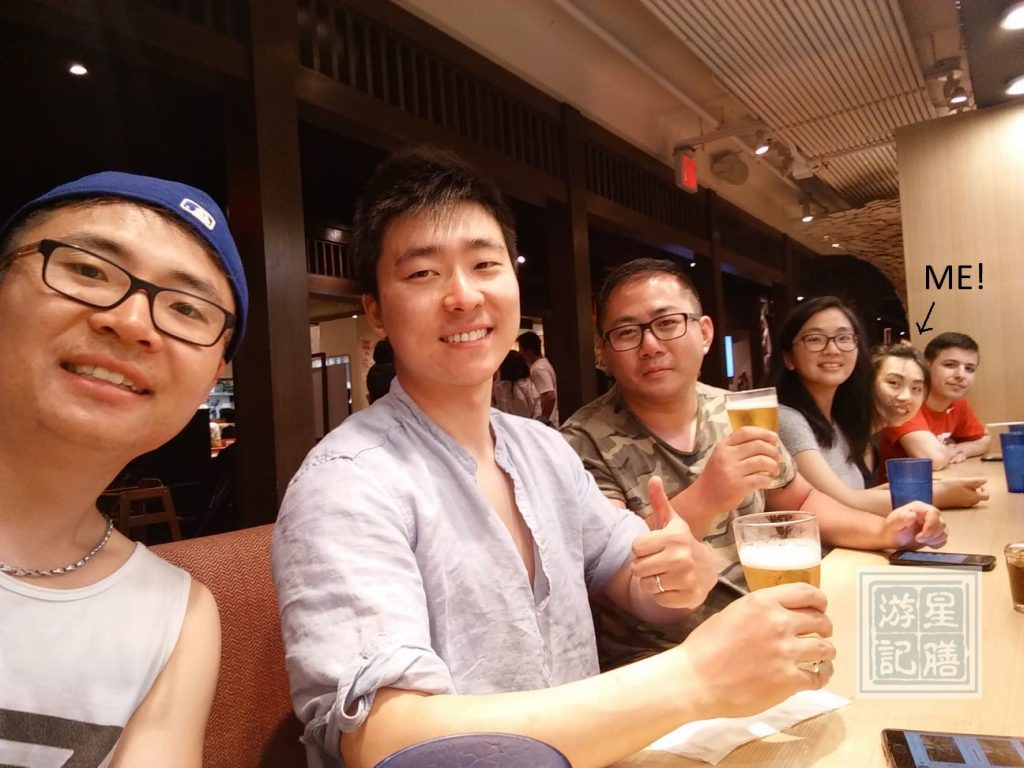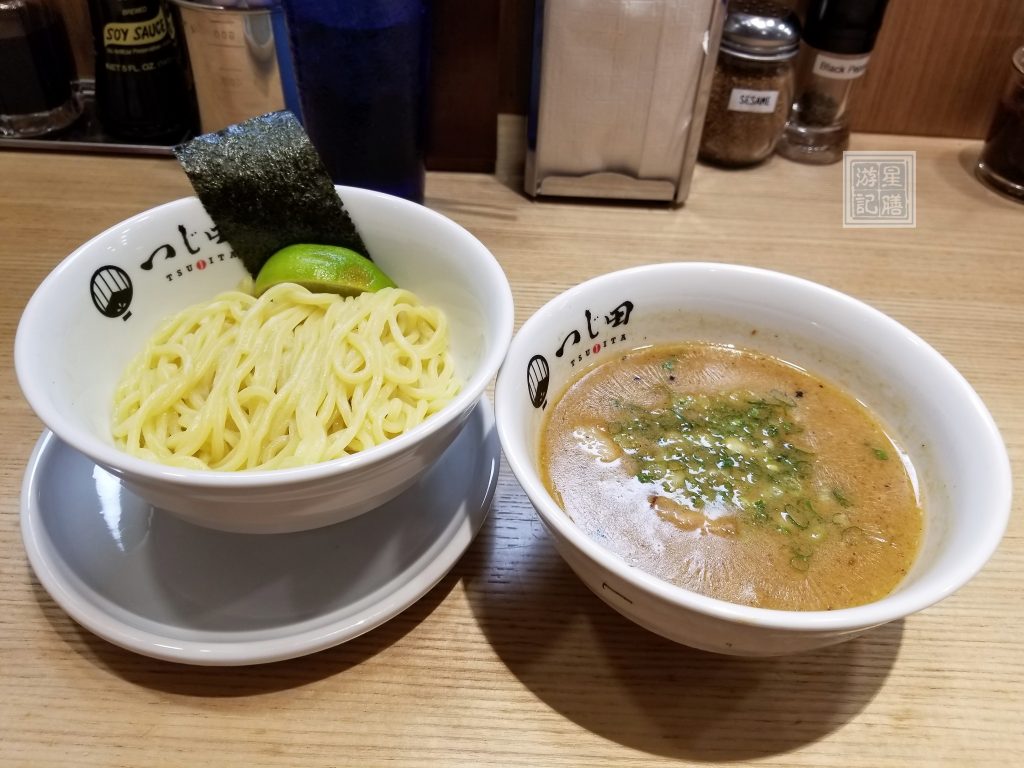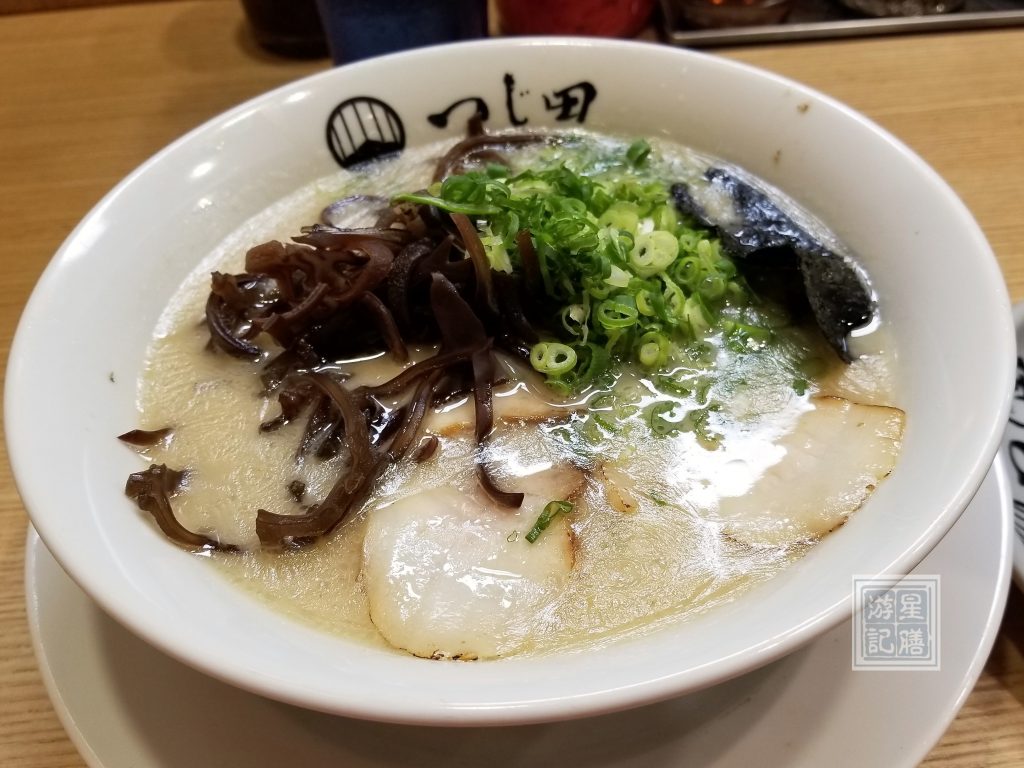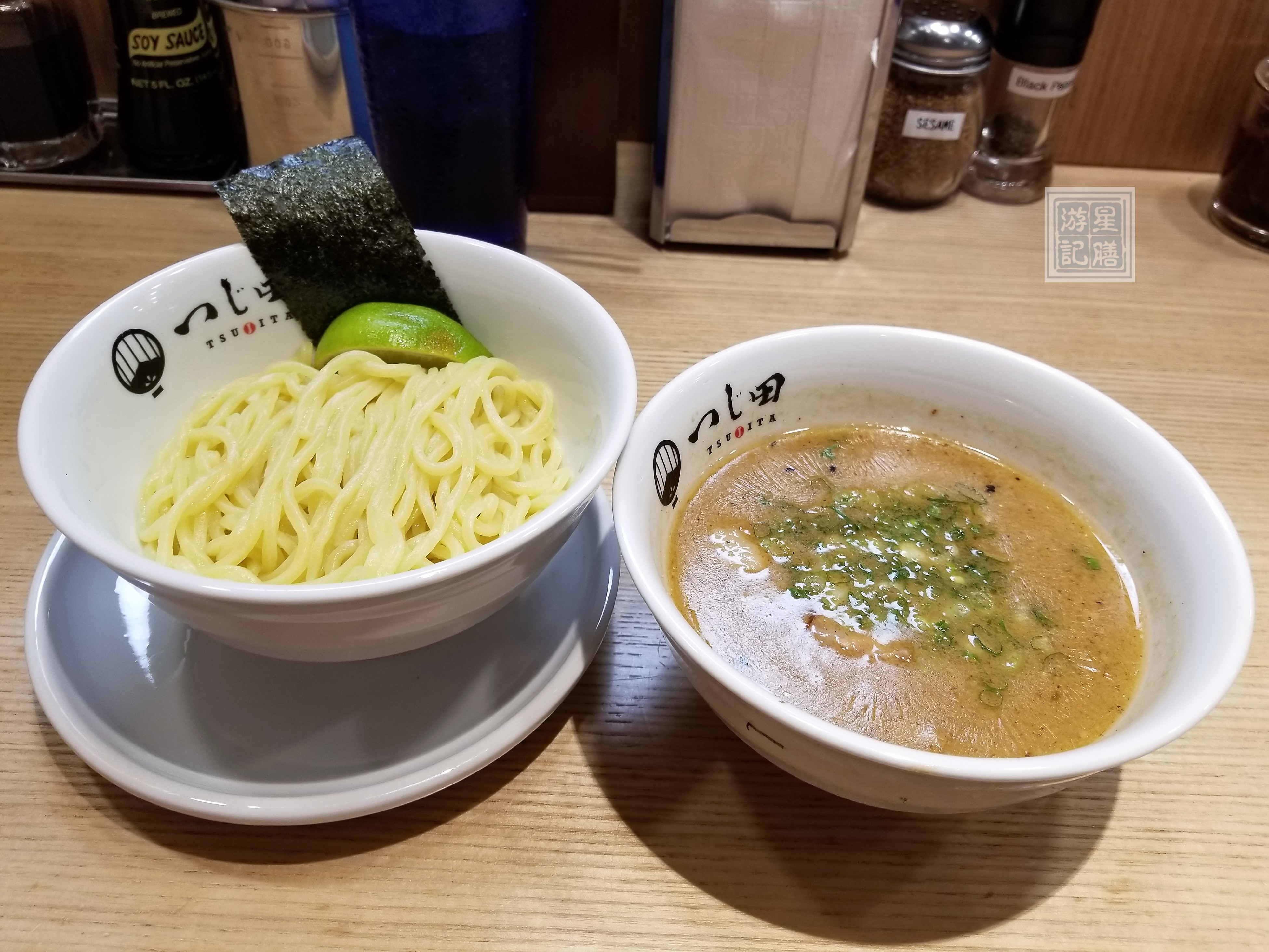While strolling through central Waikiki, we discovered Waikiki Yokocho, which was a gourmet food alley made up of 14 different Japanese restaurants. When you step in to this underground level of Waikiki Shopping Plaza (2250 Kalakaua Ave), you are instantly teleported to Japan! The oriental decor and tightly packs stalls really give off that Japanese ambience. I have not yet been to Japan, but this seems legit. Plus, Japan is a MUST on my bucket list to travel to, so I was pretty stoked to have stumbled upon this little strip?. Anyways, if you have not been to this place, I strongly recommend visiting it!
After circling around and browsing through each of their menus, we opted for Tsujita. With most of these restaurants, the servers don’t take down your name, they have a little clipboard attached to the hostess stand, where you can put your name down and your party size. The servers check them very frequently. We got seated at the bar table in front of the kitchen.

It seemed like they were known for their tsukemen and since I have never had tsukemen before, I decided to try it. Apparently, tsukemen is where the noodles are served in a separate bowl from the soup base. “Tsuke” means dip and “men” means noodle. Therefore, to eat tsukemen, you simply dip the noodles in the broth and slurp on. Google helped a lot with teaching me how to eat tsukemen properly. But on the back of their menu, they actually had tips on ‘how to eat tsukemen’, so that was very useful too.

I had the small sized original tsukemen. My research showed that the noodle part of tsukemen is normally served cold, as tsukemen is often a summer dish. However, Tsujita gives you the choice of cold or hot. I requested hot because my seat sat right under the blasting AC vent or kitchen fan of some sort?. Plus, choosing hot noodles won’t turn your broth cold after a few dunks. Now, the noodles were thicker and chewier than your average ramen. They were very firm as well. The broth was thick, dense, and very umami (quite salty if you drink it on its own). I grabbed a couple strands of noodles and immersed them in the broth. Every bite was delicious springy goodness. You can adjust the saltiness based on how much soup you leave on the noodles. There were char siu bits in the soup base, so make sure you include them for a more meaty taste. About half way down, I drizzled some lime juice over my noodles. The tanginess worked perfectly with the savoury soup base, a bit refreshing actually. Once the noodles were done, I asked for the soup-wari to thin down the broth so you can drink it as soup. They did not add enough as I felt my soup was still pretty dense and salty to drink on its own. Nevertheless, it was still very tasty, so I had a couple spoonfuls of it and chugged a glass of water after?.
I thoroughly enjoyed my first tsukemen experience very much. The only change I would like for next time would probably be to have the soup base hotter or maybe hope that I don’t sit under a fan (you can see the film on top of my soup because it cooled down as soon as it was set on the table), and also the power to decide how much soup-wari to add.

My boyfriend had the char siu ramen. The noodles were thin and al dente; soup was rich and flavourful. I only tried a bit because I barely finished my hefty small sized tsukemen. (Taking another look at the picture, I thought there should be more char siu pieces, hmmm?)
PS: CASH ONLY
